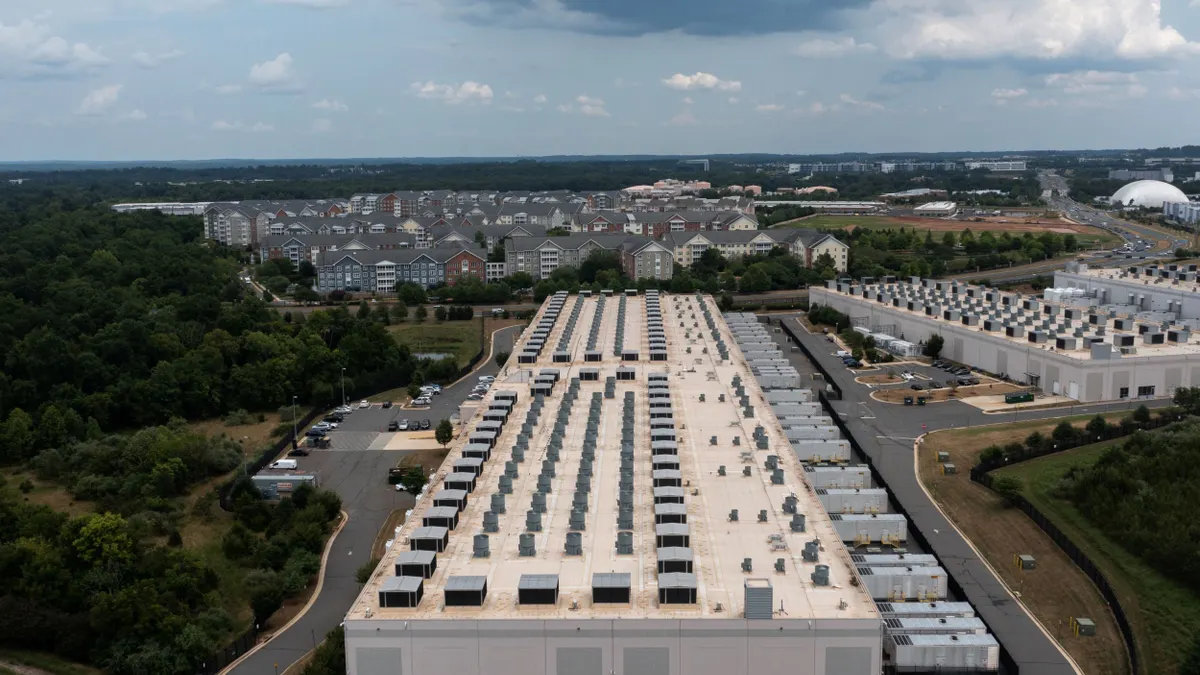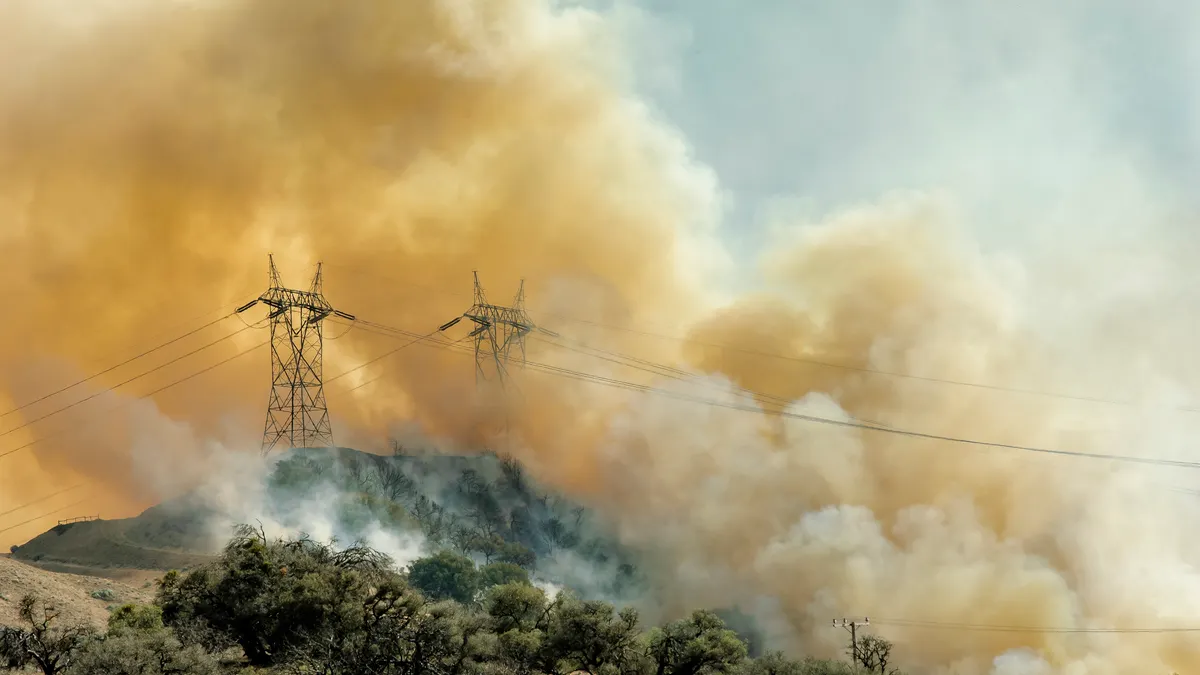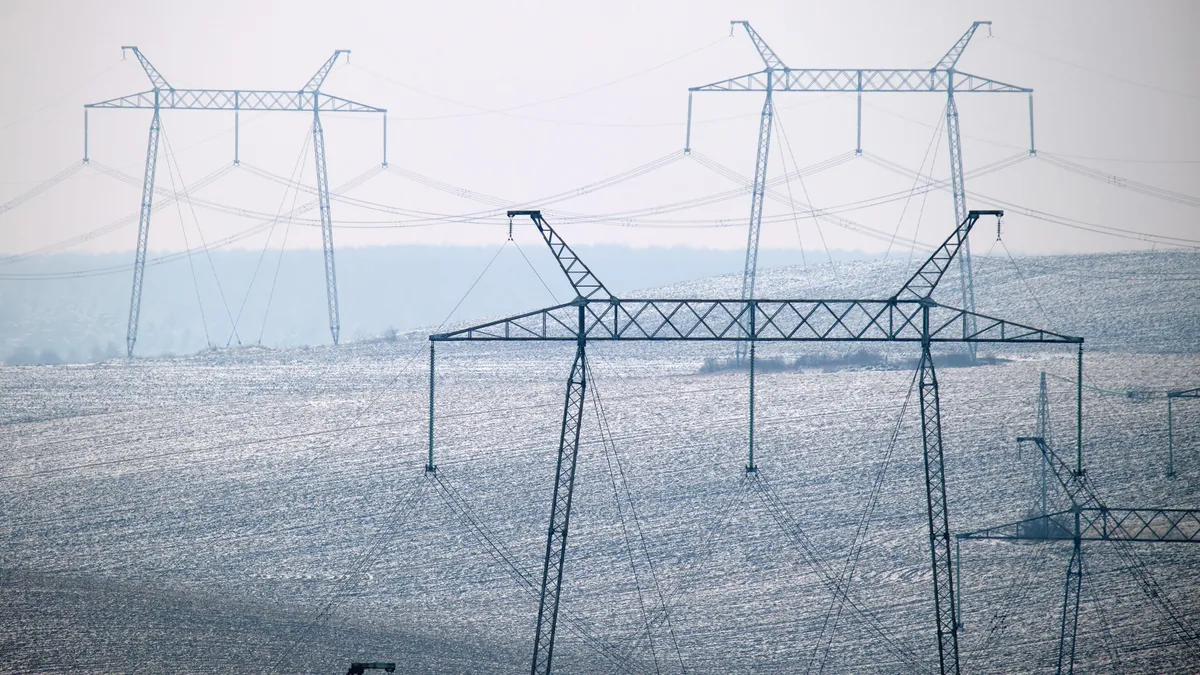An adage warns that failing to prepare is preparing to fail. Transmission experts say system planners may be doing just that.
As the U.S. moves toward a power mix with more renewable resources and flexible generation, transmission will be a key element in enabling the grid to handle the transition. As both Southwest Power Pool CEO Nick Brown and California Independent System Operator Steve Berberich recently pointed out to Utility Dive, recent record-breaking renewable energy penetrations in each of their service areas would have been impossible without aggressive transmission building in recent years.
But building transmission lines is one of the most arduous, time-consuming tasks in the power sector, and so even as demand for a more diverse power mix intensifies, transmission buildout struggles to keep pace.
A recently-released report from the Brattle Group illustrates many of the difficulties, warning that transmission planners are failing to prepare to meet the challenge of the transforming generation mix.
Successful planning, however, could save $30 to $70 billion in generation and transmission investments through 2030, researchers said. And a well-planned system could net U.S. ratepayers as much as $47 billion in savings annually.
“Most of the planning processes are not yet capturing the benefits when evaluating potential transmission upgrades,” said Brattle Group Principle Judy Chang. “The planning is still focused on shorter term reliability needs and more local needs.”
Three reasons to plan
The report, commissioned by the WIRES Group, a transmission advocate, maps out three reasons why better regional and interregional transmission planning processes are urgently needed:
-
The long lead time in planning transmission lines means planning should start immediately to meet the evolving power mix and regulatory goals from 2020 to 2030;
-
The current use of reliability as the primary measure of transmission value leads to a segmented grid, deficient in the flexibility needed to manage the emerging generation mix. That focus will "lead to piecemeal projects instead of developing integrated and flexible transmission solutions that enable the system to meet public policy goals more cost effectively;"
-
And the current transmission investment cycle is the first opportunity in a half-century to streamline the Balkanized system while controlling costs and environmental impacts.
Another factor is the role the Clean Power Plan has played in transmission building. Despite the litigation delaying the Clean Power Plan (CPP), existing factors are driving a transition in the generation mix, Chang said.
While it’s unlikely the fate of the CPP will be determined by the election, it’s clear the transition to a new generation mix is already underway, said former FERC Chair and WIRES Counsel Jim Hoecker. For the transmission that will be needed, “planning is out of sync with what is happening in the real world and should have started yesterday.”
But "old habits die hard,” Hoecker added. “It’s easier to focus largely on reliability needs, or to limit planning to incremental grid additions, or to wait and see what transpires at the generation level of the system.”
The trouble with failing to plan for future infrastructure needs is that it limits access to innovation, Hoecker said. Planning shows how opportunities like electric transportation and remotely developed, low-cost resources can be seized. Planning also illustrates the costs and benefits of seizing them.
“Transmission investment is about preserving options and delivering value, long-term,” he said.
Barriers to transmission buildout
Building “a robust and flexible regional and interregional transmission infrastructure” will be critical to meeting U.S. environmental and energy policies over the next 15 years, the Brattle paper reports.
But coordinating regional efforts can often be the most difficult part of transmission planning. States and regions finding ways to collaborate for joint planning and cost sharing of interregional transmission infrastructure is one significant barrier, Brattle pointed out.
The collaboration must begin with the requirements in the landmark FERC Order 1000 that opened the potential of regional and interregional planning, the paper argues.
The order stipulated that transmission projects in states must be built if they meet certain criteria for delivering benefits to the grid and customers, but there is no such mandate for interstate transmission projects, something SPP’s Brown said was one of his biggest challenges in his transition to a cleaner grid.
“The regional and interregional part of Order 1000 is not a mandate, it is a proposal, and it does not appear to be performing as expected,” said Hoecker, who was at the commission in the 1990s when other early efforts were initiated that later led to Order 1000. “It has not relieved the difficulties of getting multiple approvals and multiple siting orders from a succession of states. Planners are not making a strong enough case.”
Brattle Group Principle and paper co-author Johannes Pfeifenberger agreed.
“It is possible to spend a lot on transmission and not achieve the cost reductions we are talking about,” he said. “Simply building by reacting to what is in the queue and what has been proposed is not planning. With the current planning process, it would be impossible to get to a CREZ or a Tehachapi or an MVP.”
But, he added, it is not simply a failure of transmission system planners. “They take their cues from state regulators. Those projects only happened because policymakers asked system operators to make them happen.”
The narrow focus from regulators is another barrier, Chang pointed out. “Many, due mostly to a lack of understanding, are taking a pretty hard line on not paying for anything that does not meet immediate state needs.”
Some states limit regulators’ decision-making “to keeping the rates as low as possible for their state’s ratepayers,” Hoecker added.
Breaking the standoff
One of the biggest challenges for transmission in recent years has been a standoff, so to speak, between renewables developers and transmission builders, according to the report.
In many regions, the sides played a game of power planning chicken. Little was done while transmission builders waited for renewables developers to site projects and renewables developers waited for transmission builders to plan lines.
“We need policymakers to use the CPP as a target and urge regional planners to look forward and think about what a system would look like to comply with CPP or other regional policies or meeting a system’s cleaner and/or higher renewables objectives,” Chang said.
Only a regional initiative led by California Independent System Operator, and driven by the state’s 50% by 2030 mandate, represents that kind of “forward-thinking planning,” Chang said. “The California ISO planners realized meeting the mandate could be cheaper with lower cost wind, solar, and possibly geothermal, outside the state. They are asking what transmission across the West would be needed to bring in those resources.”
The initial planning study shows CAISO's ambition to turn the West's 38 balancing authorities into a full wholesale market structure could save California electricity users $1 to $1.5 billion in 2030, Pfeifenberger said.
“That may not be enough savings for state policymakers if they have a strong preference for the benefits of in-state compliance,” he said. “But without planning for alternatives, nobody knows what the cost differences will be. Policymakers should want to know that before they make a decision.”
Planning at the ISO level
The system operators say they are moving ahead. California’s regionalization initiative is the kind of planning the paper’s authors would like to see replicated.
There are several other examples of California planning, according to the ISO's Senior Public Information Officer Steven Greenlee.
First, the system operator has continually improved its planning process and market design to support the state’s investor-owned utilities in meeting their Renewables Portfolio Standard (RPS) obligations, he said.
Second, the ISO is part of the California Public Utilities Commission Long-Term Procurement Plan and the California Energy Commission Integrated Energy Policy Report, Greenlee added. “Our transmission plan is an important input into the CPUC proceeding and regulators are active in our transmission planning process.”
Another key advance that enabled utilities to meet the state’s 33% RPS was a revision that added "policy driven" to the ISO’s “reliability and economic” market design criteria, Greenlee said. “Now a project that meets energy policies can be approved on its merits, just as can projects that meet reliability needs and projects that reduce costs.”
Fourth, the ISO is now working on planning to meet real-time ramping needs with a flexible ramping product intended to help system operators better manage renewables, he said.
MISO’s work with stakeholders to create its MVP portfolio demonstrated it is “an innovator in transmission planning to address public policy goals,” Spokesperson Andy Schonert said.
That work was “a case study” in planning transmission projects to meet reliability, economic, and public policy needs and its ongoing MTEP17 “uses assumptions developed through our Clean Power Plan modeling to help guide our transmission planning,” Schonert added.
MISO is also coordinating on CPP analysis with PJM and SPP “to provide more information to guide the process,” he said.
SPP’s planning process, according to its Value of Transmission Report, resulted in transmission upgrades that integrated higher levels of renewables while meeting reliability, economic, and public policy goals, said SPP Vice President of Engineering Lanny Nickell. Those upgrades will ultimately provide benefits “3.5 times higher than their costs.”
As part of SPP's ongoing effort to anticipate and solve future needs, its stakeholders are reviewing the current planning process, he added.
The SPP Regional State Committee, made of regulators from states in its footprint, “plays a critical role,” Nickell said. “We work diligently to both educate those policymakers and ensure their views are heard and considered.”
These system operator responses underscore the point from the Brattle report that when policymakers give direction, planning gets done. But too often, Chang said, “state leaders are focused on state policy, system operators are waiting for direction on regional planning policy, and nothing is happening.”
An ‘insurance policy’ for the grid
As new policies lead to a new generation mix and the bulk power system “transforms itself,” a well-planned, flexible transmission infrastructure provides an “insurance policy” against the risk of significant cost increases for customers, the paper concludes.
Deciding on the specifics of that insurance policy “is what planners are supposed do,” Hoecker said. Lawmakers are not likely to drive change in that regard.
“It would take a different Congress that was looking at needs nationally and not just protecting the authority of the states,” Hoecker added. “The appropriate source of ideas for regional and interregional planning is planners and there is a great deal of urgency here. We can’t wait for the future to arrive and quickly decide how to accommodate it, especially given the time cycle for transmission development.”
Merchant transmission planners like Clean Line Energy Partners may be pointing the way for planners because “it is their business to find the most cost-effective potential solutions,” Chang said.
But the difficulties from multiple state regulatory regimes, finding customers, and making a business model work that is based solely on node to node price differentials demonstrates why transmission is ultimately a utility business, she said. “It is a cost that needs to be shared by all those who benefit from the infrastructure."




















